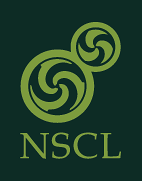NSCL researchers participate in experiment that expanded the neutron dripline for the first time in 20 years
Hot off the press in Physical Review Letters:
A search for the heaviest isotopes of fluorine, neon, and sodium was conducted by fragmentation of an intense 48Ca beam at 345 MeV/nucleon with a 20-mm-thick beryllium target and identification of isotopes in the large-acceptance separator BigRIPS at the RIKEN Radioactive Isotope Beam Factory. No events were observed for 32,33F, 35,36Ne, and 38Na and only one event for 39Na after extensive running. Comparison with predicted yields excludes the existence of bound states of these unobserved isotopes with high confidence levels. The present work indicates that 31F and 34Ne are the heaviest bound isotopes of fluorine and neon, respectively. The neutron dripline has thus been experimentally confirmed up to neon for the first time since 24O was confirmed to be the dripline nucleus nearly 20 years ago. These data provide new keys to understanding the nuclear stability at extremely neutron-rich conditions [Phys. Rev. Lett 123, 212501 (2019)]
The Letter is highlighted as an Editors’ Suggestion and NSCL’s Professor Artemis Spyrou wrote the Physics Viewpoint: Reaching the Limits of Nuclear Existence



